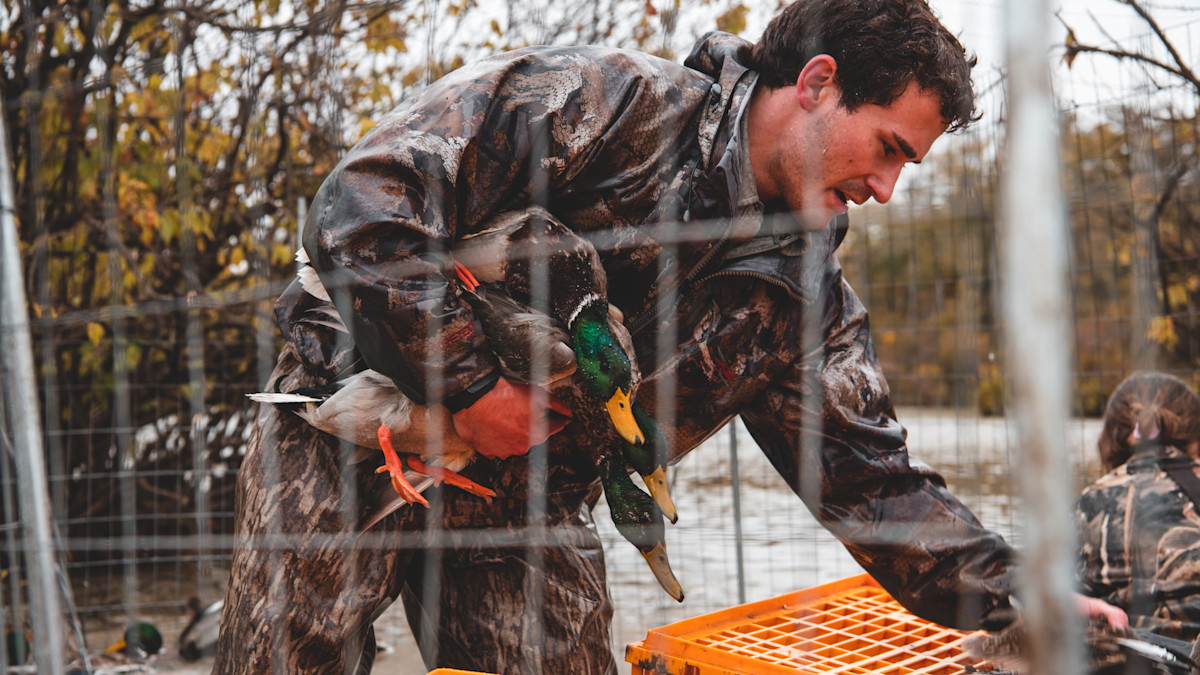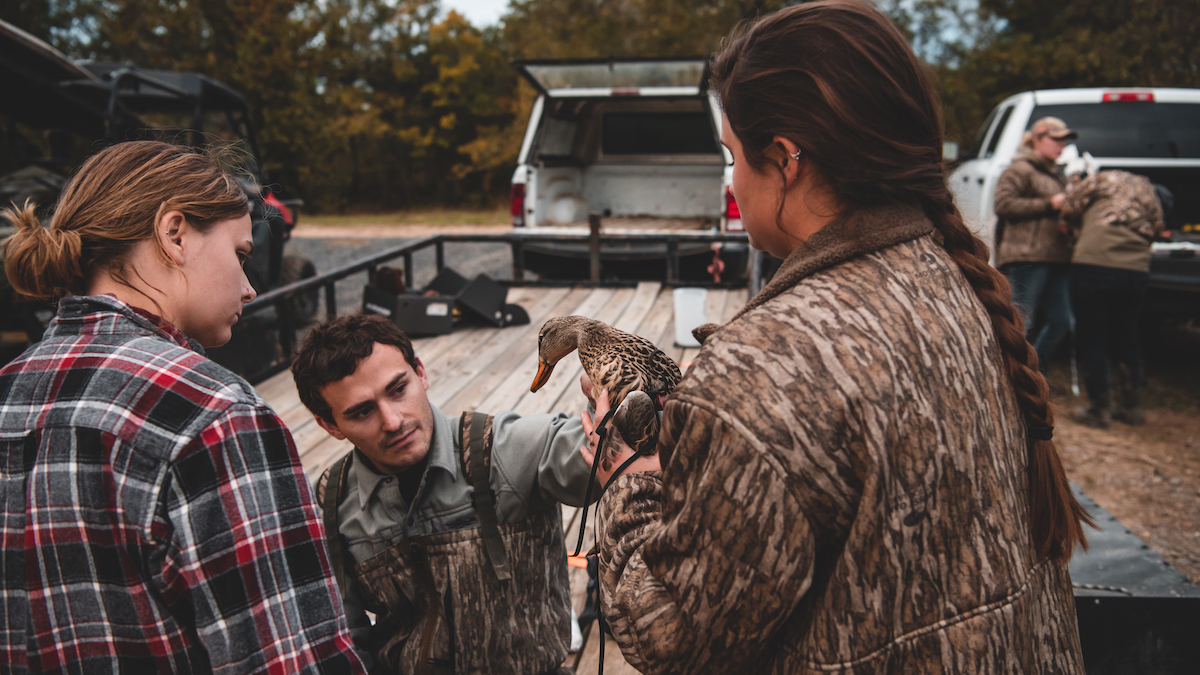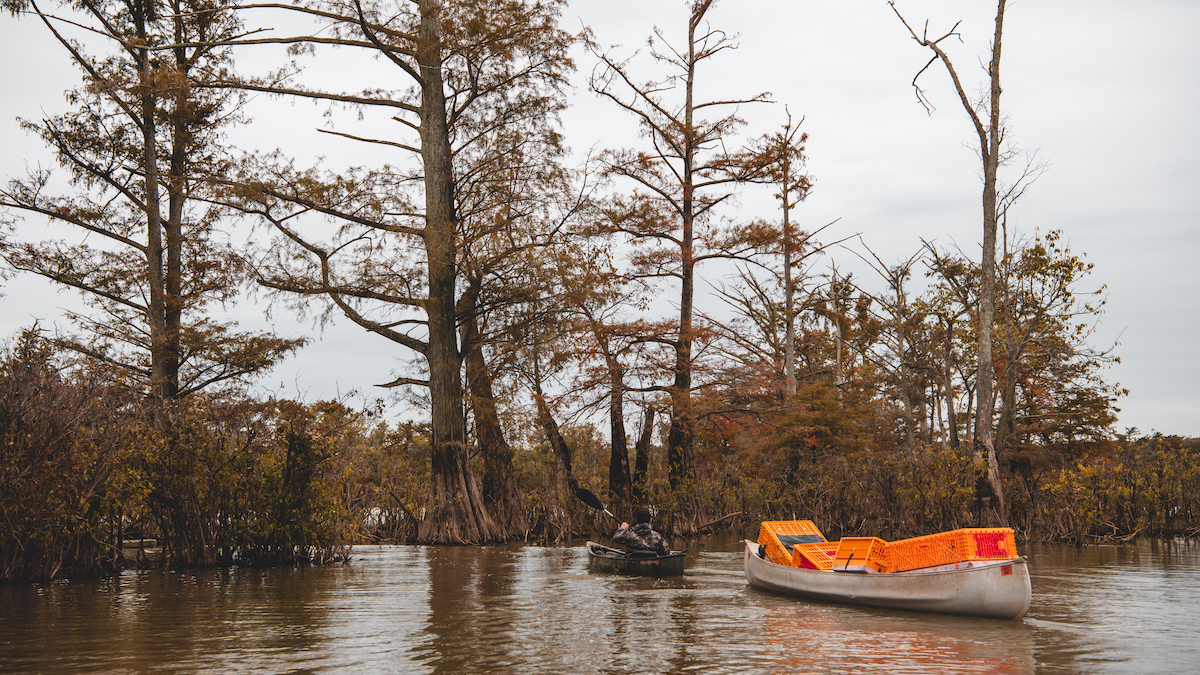
At the close of every duck season, it doesn’t take long for mallards and other puddle ducks to fill the skies and start landing in front of vacant hunting blinds. Greenheads, pintails, and other waterfowl dabble and preen in waters they would not have prior to the close of the season because hunters would have been there trying to coax them into shooting range. The chatter in taverns across the four flyways and on social media begins. It’s the same complaint every year. Hunters want later season dates because they think the ducks just arrived.
Well, not exactly. What some bird hunters are seeing in the weeks immediately following the season could be new migrants, but many have been there the whole time. They’re just now coming out of hiding.
Two recent telemetry studies in Arkansas and Tennessee (the latter is still ongoing) show that mallards become programmed to avoid hunting pressure and human disturbance once the season is underway. The birds stick to sanctuaries devoid of shotgun blasts and boats racing through the marsh. There have also been telemetry studies conducted on gadwall and pintails that reveal similar habits.
The reason hunters aren’t seeing as many ducks during the season—and harvest rates on mallards are dropping in many states—might have more to do with the evolution of the species than the migration. Extending your season another week isn’t likely to result in better hunting (unless there is a weather event that causes birds to move). Later season dates will only keep greenheads on the same cautious schedule that’s kept them alive since opening day.

How Mallard Telemetry Studies Work
To gather data on mallard movements, biologists bait and trap mallards, typically with corn or rice, and affix a 20-gram radio pack to their backs. The GPS packs are charged by small solar panels, and the movements of these birds can be tracked using cell towers—the same technology we all use to send a text or make an Instagram post. If a mallard flies out of cell range, the pack will store the information until the bird comes within range of a tower, and the data can be offloaded. Telemetry studies are not new, but the technology used by these cell tower radio packs is. Previously, biologists had to be within a specified distance of the transmitters to chart the data, which was a much less efficient, time-consuming process.
Ethan Dittmer, a doctoral candidate at the University of Nebraska, wrote his Master’s thesis on the adaptive behavior of mallards during hunting season guided by Dr. Doug Osborne at the University of Arkansas-Monticello. From 2019 to 2022, Dittmer affixed transmitters on 105 mallards, capturing the birds at four different sites within Arkansas’s White River National Wildlife Refuge. A similar study is being conducted in western Tennessee by Ph.D. students Cory Highway, Nick Masto, and Abby Blake-Bradshaw under the supervision of Dr. Brad Cohen at Tennessee Tech University.
“We wanted to see how mallards used Arkansas private and public lands from November to February,” Dittmer said. “We deployed our mallards (trapped and affixed transmitters to them) in spatial sanctuaries (refuges that are closed to all public access). From deployment to the end of duck hunting season, during the day, (the mallards) preferred the spatial sanctuary and at night they were on private lands.”

Mallards Only Move When They Have To
Both studies provide a detailed look at mallard movements in wintering areas. What they discovered is quite illuminating. Once the duck season begins, mallards quickly adapt to survive, spending their nights feeding on private, flooded agriculture and flying back to the refuge before shooting light in the morning. They spend the remainder of the day on these sanctuaries and do not fly out to feed until after sunset. The mallards remain on this strict regiment for the entirety of the season unless a substantial weather event forces them to move.
“Obviously, our research is focused in one area and can’t be generalized until more studies are done. But if you look at our data, these ducks get in a pretty predictable pattern,” said Cohen, whose students have placed transmitters on over 600 mallards for the last four years. “They know when the safe times to move are.”
But weather is consistently a wild card in determining bird movement.
“This last December, we had a cold front move through. I’m sure that pushed some birds south, but it also froze up many of the areas our mallards were using in West Tennessee. And that caused ducks to start searching again to find open water. Good hunting isn’t just weather pushing ducks down; it’s a disruption of the daily pattern ducks have become used to.”
Dittmer’s mallards hardly spent any time at all on public hunting areas—day or night—until duck season ended. Once it did, the birds began to frequent public hunting acres and moved away from using spatial sanctuaries during daylight hours.
“When hunting season was on those mallards were either on the sanctuary or private agriculture, normally flooded rice,” Dittmer said. “But about two weeks after hunting season ended, during the daytime, they preferred public hunt areas over spatial sanctuaries (mostly flooded timber) and private lands. It was really clear that once hunting season ended, mallards started using these formerly risky areas. Presumably, they somehow knew it was safe.”
Dittmer’s research also revealed that the ducks aren’t likely to fly away or come in from somewhere else once the season ends.
“What intrigued me most about these mallards, other than how smart they were, is that most of them stayed within the vicinity of White River NWR,” he said. “Out of 105 birds, only two moved farther south than Arkansas.”

Creatures of Habit
Many of the Arkansas and West Tennessee mallards from these studies not only flew at predictable times, but also used the same refuge and the same flooded ag fields for weeks on end.
Cohen’s students observed that about 70% of their mallards would choose one refuge and stick to it the entire season, usually flying no more than a few miles away. And they typically flew twice a day, sometimes less. His students purposely disturbed mallards in their sanctuaries, walking into the refuge and running a boat through the marsh to stir the birds up and get them to move. But it seemed to have the opposite effect. Hardly any of the mallards left the refuge.
Only one GPS-tracked mallard was shot, and shotgun volleys decreased by 50 percent—Cohen uses autonomous recording machines within the designated study area to record shotgun blasts—when the disturbances were created.
“We’d go to these refuges once a week and spend an hour there and rally the birds at different intensity levels,” Cohen said. “One disturbance would be just a person walking around. Another disturbance would be ripping a boat through every inch of that refuge and never letting a single duck land. We expected the ducks to move around a lot more and that hunters would be more successful when we got those birds up.”
Shockingly, the opposite happened.
“The birds seemed to move less,” Cohen said. “It was like if you’re a little kid and scared, and instead of running out of your room, you hunker down in your bedroom and pull the covers over your head. That’s what we think is happening with the ducks. They know this place is safe, and they are reluctant to leave because so few places are safe. So they seem to hunker down and stay still.”
Dittmer’s mallards acted much the same. He tracked their peak flying times, which, not surprisingly, were in the minutes before legal shooting light and after sunset. The only times his birds were killed—only 10 were shot during the study—was if they flew off the night roost a little too late or left the safety of the sanctuary too early. And of the 10 mallards harvested, only two were shot on White River NWR, where they were deployed.
“I am not surprised by mallards' ability to stay alive,” Ducks Unlimited Senior Waterfowl Scientist Mike Brasher, said. “It’s impressive, don’t get me wrong. But any species that has lived this long has done so for a reason. The mallard is one of the most harvested game species in the world, so of course, they are going to have to do what they need to survive.”

Breaking Mallard Patterns Will Improve Hunting
How to increase hunter-harvest rates while doing what is best for the ducks is a debate waterfowlers, biologists, and wetlands managers have had for decades. All of us want to shoot daily limits of greenheads every time we hunt, but the reality is, the way many public and private hunting areas are managed for hunting pressure doesn’t lend to that experience.
For instance, Dittmer’s study revealed that his mallards stayed away from public hunting areas—no matter how they were managed for hunting pressure—the entirety of duck season. That means whether the area was open daily or just a few days a week (to allow birds rest), mallards didn’t use those wetlands, presumably because they knew such places were dangerous. The mallards in both studies used private lands almost exclusively after sunset when hunters were not present and disturbance was minimal.
“We thought that ducks were continually trickling down to West Tennessee throughout the season,” Cohen said. “But that doesn’t seem to be the case. When our transmitted ducks return south the next winter, they tend to come in two major pushes. And most birds that are going to make it to West Tennessee are here by the beginning of January. That means we’re hunting a lot of the same ducks for weeks and months.”
It’s difficult to say if the same migration scenario plays out across the U.S., but I believe most duck hunters will tell you that they are seeing fewer “new birds” during the season and are hunting stale ducks more often. A telemetry study of Great Lakes mallards has shown that most of the ducks in that region simply do not leave it regardless of weather patterns. So there is a precedent for mallards staying put for long stretches throughout duck season.
“I know that we hunt a lot of ducks that are here all season, which is why we try and leave them alone the best we can,” Ira McCauley, a co-owner of Habitat Flats, said. “We created holes (wetlands) under their flight lines so they don’t get as pressured.”
McCauley and his partners also flood small refuges for the ducks they hunt, which is critical to get birds moving and giving hunters a chance to shoot them. I’ve also seen this method employed at several of the outfitters I’ve hunted with and on other well-managed private properties. Of course, it’s not cheap to buy ground just to allocate as a sanctuary, so not many can afford to do it. But data from Dittmer and Cohen’s studies—most of their mallards used one refuge the entirety of the season during daylight hours— supports the idea that you need multiple safe spaces for mallards to get them to fly.
“A mallard will fly a couple of miles from the refuge, look around, and then fly back to the refuge because they know it’s the only safe place to go,” Cohen said. “The second part of our study will be working with private landowners to introduce smaller sanctuaries on their properties; to designate an area that they do not disturb and never hunt.”
The thought is more sanctuaries will entice ducks to move freely instead of having one refuge where large concentrations of birds congregate. This may better distribute ducks and possibly get them to move more frequently.
“Partnerships with your neighbors might become really important,” Cohen said. “If you can all agree to hunt the edges of your properties and leave the middle as a safe space, that could build up ducks in your area. Look at the deer literature, look at the turkey literature…what we have learned is the less disturbance we put down, the more returns we are going to get in seeing animals.”
So, what can be done to see more ducks during the season?
“If you can make more sanctuaries for ducks, that will theoretically get them moving to different places, increase their space use, and make it easier to shoot them,” Cohen said. “Hunters have constrained ducks and so they know that either I need to move as little as possible or I die. The hunters who are successful realize this, and they understand that you have to sacrifice hunt days for hunt quality.”






Conversation